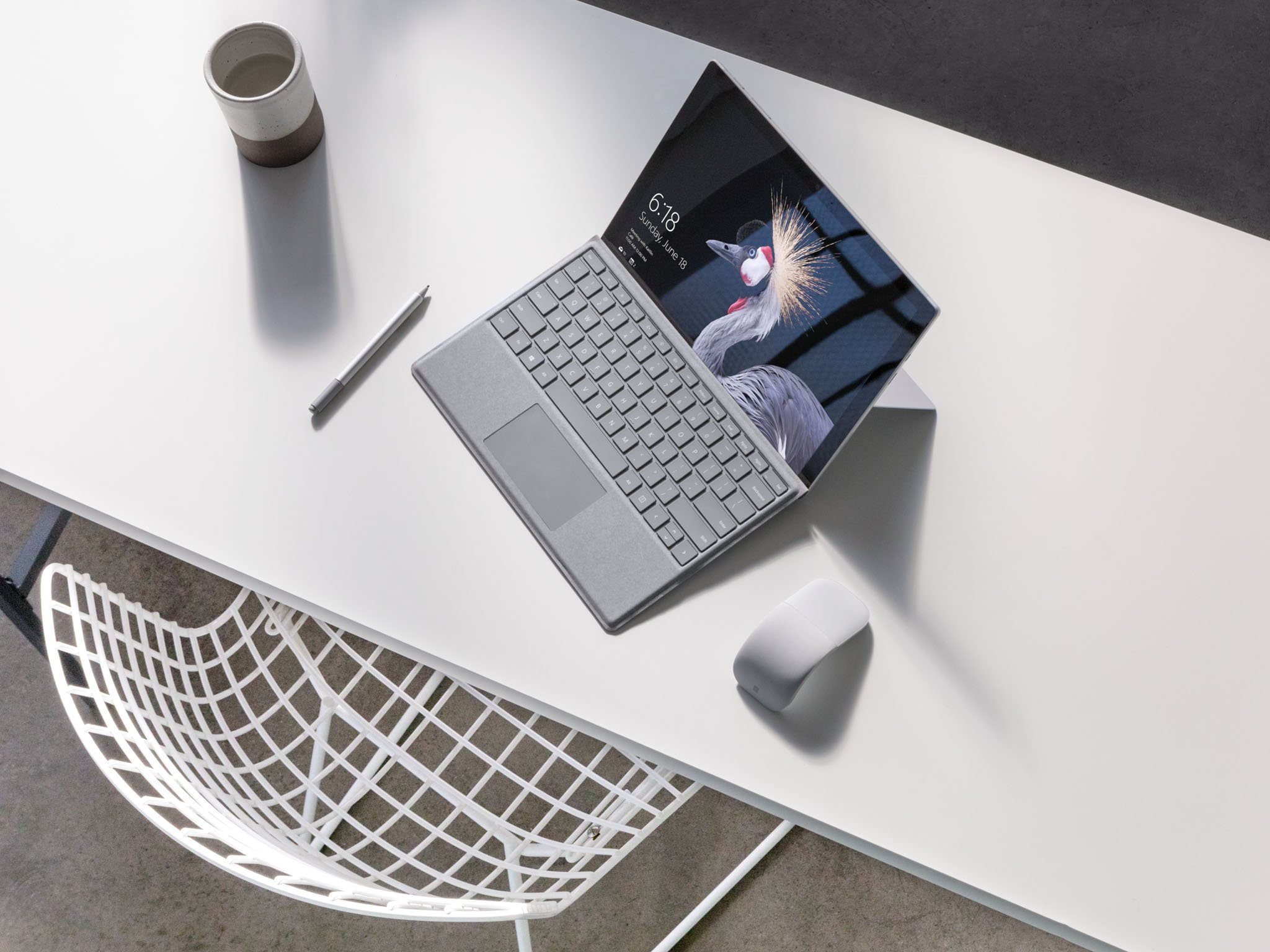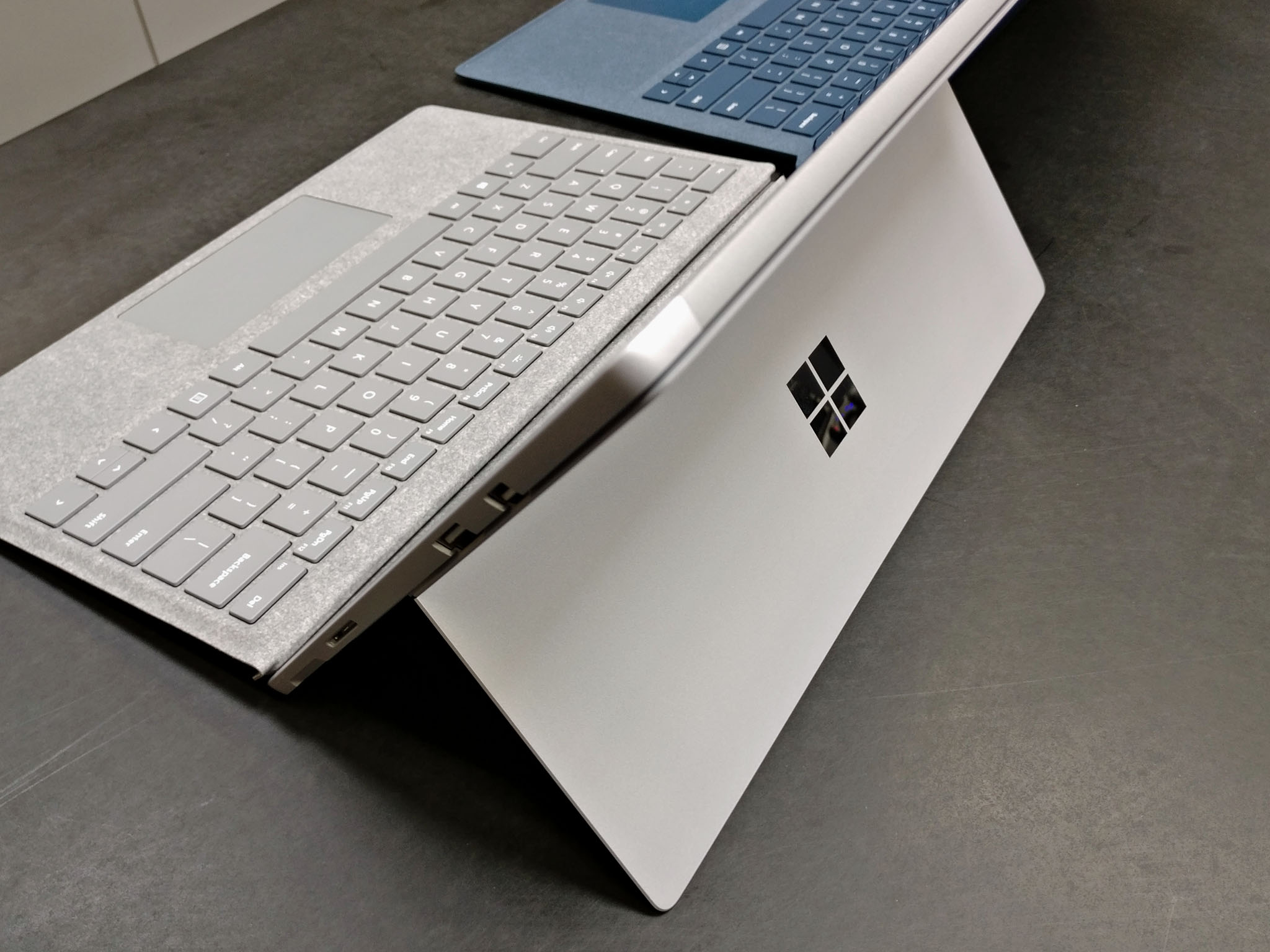How Microsoft changed the Surface Pro conversation from a tablet- to laptop-focus
2018 marks five years for Microsoft's Surface Pro. In that time Surface has gone from "the tablet that can replace your laptop" to "the most versatile laptop?"

Marketing is important to a product's positioning, what products it will compete against and how it's perceived independently and in relation to other products in a category.
Microsoft's Surface Pro was a unique device that was designed to showcase Windows 8, an OS meant to transition seamlessly between the touch-friendly mobility of tablets and the productivity context of laptops. Conceived during a time, per Surface creator Panos Panay when tablets were predicted to replace laptops, Surface was intentionally designed to meet that shift while retaining the productivity forte' of Windows on a laptop form factor.
Putting the full power the PC into a tablet form factor was, therefore, the springboard of the Surface journey.
Surface Pro
In 2012 former Microsoft CEO Steve Ballmer introduced Surface Pro, the tablet that can replace your laptop (which came to market in early 2013). Ballmer's walking around stage with the keyboardless Surface (touch and type covers were introduced later in the presentation) was an interesting visual that hammered home the tablet positioning of this device.
The focus on leisure activities, Store apps and the kickstand which allowed comfortable media consumption were highlighted before the introduction of the keyboard which allowed the more familiar Windows productivity scenarios.
It's important to remember that in 2012 Windows tablets were woefully absent from a popular slate tablet space dominated by iPads and Android tablets. Microsoft's Surface and Continuum-enabled context-conforming Windows UI was Microsoft's way of bringing a Windows tablet category to market buttressed by the strength of its desktop legacy.
Surface Pro 2
Surface Pro 2 began an interesting trend in Surfaces evolution and the language used to define it. Though Panay presented the Pro 2 as the most powerful professional tablet, the context and the language he used to qualify these claims reveal how Microsoft was really positioning this tablet.
Get the Windows Central Newsletter
All the latest news, reviews, and guides for Windows and Xbox diehards.
His reference (above video) to how this tablet was faster than 95 percent of the laptops in the market (at the time), and highlighting the revised kickstand for better lap use reveal the product category Microsoft was really targeting with Surface. He referred to the device as a full PC and referenced transforming that word (PC) and putting it into a tablet form factor.
This PC positioning was hammered home when Panay introduced the Surface Docking Station which allowed the Pro 2 to power up to two screens in a desktop scenario and handled raw image/video processing from one of the movie industries most advanced cameras.
Surface Pro 3
Though the first two Surface iterations lost Microsoft $1 billion the company plowed forward. CEO Satya Nadella shared that the company wanted to design a device that takes the best of a tablet and laptop and enables individuals to both consume and create in various scenarios from literature, art and even movies. He qualified the Surface Pro 3 as a major step toward that goal.
Panay expressed that the company was, at this time, at a crossroads because when consumers went to make a purchase, there was a conflict as to whether they should get a tablet or laptop. "What is it that you want to do?", the question sales clerks ask, Panay shared was the context for Microsoft's Surface strategy.
Ultimately people have both a tablet and laptop in their bags and phone in their pocket he acknowledged. He also highlighted that 96 percent of the journalists at the Surface Pro 3 event were using laptops, and not tablets, which were predicted years earlier as laptop replacements. It is upon this reality that the Surface marketing continued to evolve from a tablet to laptop positioning.
Panay stressed the early "click and do more" motto which differed from the primary consumption use of tablets. He also stressed how the 12-inch display of the Surface Pro 3 showed six percent more content than that 13-inch MacBook due to its 3:2 aspect ratio. He also bragged about the PC power in this thin tablet form factor. And to drive his point home, he put an iPad and MacBook on one side of a scale and the Surface Pro 3 on the other to demonstrate how it was lighter than the laptop and tablet it was positioned to replace. From Microsoft's perspective Surface Pro 3 was a turning point that began resolving the conflict PC and tablet consumers have.
How the Surface changed Microsoft forever
Surface Pro 4 and Surface Pro 2017
During the Surface Pro 4's introduction, Panay consistently compared it to a Macbook. In fact, he stated that he wouldn't compare it to any tablet because there was no tablet in its class. So though Microsoft still pushed the "the tablet that can replace your laptop" tagline with the Pro 4, it's clear the company had long been targeting, and was settling on, laptop users as the Surface's audience.
Part of this laptop positioning was doubtless a play to the company's strengths. Though Surface's tablet design is both efficient and premium, the software ecosystem for consumption activity on Windows falls short compared to iOS and Android. Second, over the years, the slate tablet form factor has dropped in popularity as the market favors 2-in-1s. Thus, by the fifth iteration of Surface Pro, the combination of the state of the tablet industry and Microsoft's own strengths positions the company to, without reservation, bring the Surface's laptop focus to the forefront.
Thus, Surface Pro 2017 with its 165-degree hinge and Surface Studio-inspired Studio mode, LTE for improved mobility, more advanced camera and microphones for Skype communication, detachable tablet mode and more, make this Surface, at least from Microsoft's perspective, the most versatile laptop.
Is it really laptop?

Our own Senior Editor Zac Bowden contends with this designation. Though I'm not completely sold on its accuracy, Microsoft has progressively positioned Surface Pro more as a laptop than tablet.
And though it is not a "laptop" in the traditional sense, particularly with the keyboard sold separately as Bowden points out, perhaps its category-defining nature and "most versatile" designation makes allowances for this "non-traditional" laptop packaging. Perhaps. What do you think?
Related reading
Surface Pro 2017 Review
Jason L Ward is a columnist at Windows Central. He provides unique big picture analysis of the complex world of Microsoft. Jason takes the small clues and gives you an insightful big picture perspective through storytelling that you won't find *anywhere* else. Seriously, this dude thinks outside the box. Follow him on Twitter at @JLTechWord. He's doing the "write" thing!

